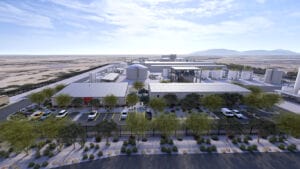Arizona posted steady job growth in October, driven in large part by Arizona healthcare job gains.
Arizona job growth decelerated modestly in October, with a seasonally-adjusted over-the-month gain of 5,400 jobs. That was down from a revised gain in September of 10,800. The preliminary estimate put the September gain at 11,200.
MORE NEWS: Here are the 50 biggest employers in Arizona
Arizona’s seasonally-adjusted unemployment rate ticked up to 3.6% in October, up from 3.5% in September. Arizona’s rate remained below the national average in October (4.1%).
In October, five of the state’s eleven major industries added jobs, with leisure and hospitality and private education and health services adding the most (3,600 and 2,400, respectively). Financial activities (up 900), construction (up 400), and natural resources and mining (up 100) also added jobs.
In contrast, other services (down 700), manufacturing (down 500), information (down 400), professional and business services (down 300), and government (down 100) lost jobs. Jobs in trade, transportation, and utilities were stable over the month.
As Exhibit 1 shows, Arizona’s over-the-year job gains in October were concentrated in private education and Arizona healthcare job increases; professional and business services; trade, transportation, and utilities; government; and financial activities. These five sectors accounted for 90.5% of total gains.
Jobs in manufacturing and information were down over the year in October. While manufacturing jobs are expected to rise strongly in coming years (reflecting expansion in semiconductors, battery production, and other sectors), hiring has been weak lately as employment in nondurable goods declined. Information jobs include both telecommunications and high-tech internet publishing jobs. These sectors have been shedding workers lately.
Exhibit 1: Arizona Net Job Change (Thous.) and 2023 Annual Wages per Worker
Overall, according to preliminary data, state jobs were up 65,000 over the year in October, which translated into 2.0% growth. That was above the nation at 1.3%. Year to date through October, jobs were up 68,500, or 2.2%. Again, Arizona outpaced the U.S. at 1.7%.
Keep in mind that the U.S. Bureau of Labor Statistics has indicated that (based on data through March of 2024) they expect to revise Arizona jobs up with the benchmark revisions to be released in March 2025.
Jobs in the Phoenix MSA were up 45,100 over the year in October, for 1.9% growth. Phoenix accounted for 69.4% of state gains. Year to date, Phoenix jobs were up 52,400. That translated into a 2.2% increase.
In October, Phoenix job growth was driven by private education and health services, with support from trade, transportation, and utilities; professional and business services; government; financial activities; and leisure and hospitality (Exhibit 2). Jobs were down over the year in manufacturing and information.
Exhibit 2: Phoenix MSA Net Job Change (Thous.) and 2023 Annual Wages per Worker
As for the state, the U.S. Bureau of Labor Statistics expects to revise Phoenix jobs up with the benchmark revision in March 2025.
Tucson MSA jobs were also up over the year in October, rising by 3,800. However, that translated into relatively slow growth of 0.9%. That was below the state and national averages. Year to date, Tucson jobs were up 3,600 or 0.9%.
As Exhibit 3 shows, Tucson job gains over the year were dominated by private education and health services and Arizona healthcare job gains, with a solid contribution from financial activities. In contrast, jobs were down significantly in professional and business services and government.
Exhibit 3: Tucson MSA Net Job Change (Thous.) and 2023 Annual Wages per Worker
The U.S. Bureau of Labor Statistics does not release preliminary benchmark analysis for smaller metropolitan areas, like Tucson and Prescott.
Prescott MSA jobs were up 1,400 over the year in October, for 2.0% growth. Year to date, Prescott jobs were up 1.5%.
As Exhibit 4 shows, over the year job gains were concentrated in government, followed by trade, transportation, and utilities; mining and construction; private education and health services; manufacturing and other services. Jobs were down in professional and business services and leisure and hospitality.
Exhibit 4: Prescott MSA Net Job Change and 2023 Annual Wages per Worker
Author: George W. Hammond, Ph.D., is the director and research professor at the Economic and Business Research Center (EBRC).




